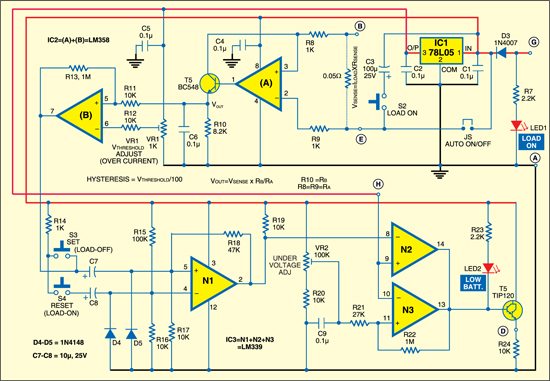Most of the Indian subcontinent receives full sunlight for about five hours a day. (Refer to the map at www.solar4power.com/map14-global-solar-power.html). Taking the conversion efficiency of the system into account, a PV panel rated for Pmax of 75 watts will be able to supply you 75 watts of power for just five hours per day. Thus you would be able to draw only 75W×5 hours = 375 watt-hours of energy per day from the PV panel.
If you desire to run your appliance for a longer duration, you will have to install more number of PV panels and connect them in series/parallel for increasing the combination’s voltage/current rating.
In India, various companies like Central Electronics Ltd (CEL), Bharat Electronics Ltd (BEL), Bharat Heavy Electricals Ltd (BHEL), Moser Baer Photovoltaic, TATA-BP Solar and Maharishi Solar Technology are making solar panels using indigenous and imported technologies. A PV module such as the PM80 from CEL, Sahibabad, having the specifications as shown in the table on previous page, could be used for our example case.
Battery selection
The selected PV module should be able to support an energy supply of 375 watt-hours per day. That means if you have an appliance rated at 40 watts which is supplied power from an inverter (with power conversion efficiency of, say, 80 per cent), you would be able to use the appliance for an aggregate of 7.5 hours (40W×7.5 hours× 100/80 = 375 watt-hours).


As per the recommendations of International Energy Agency, one should draw not more than 40 per cent of the rated energy capacity (VAh) of a battery during a 24-hour period. Accordingly, your battery should be rated for at least 375×100/40 = 937.5 watt-hours of energy. With the battery terminal voltage of 12V, its capacity should be around 80 Ah (energy capacity=12V×80 Ah=960 Ah). Tubular-type battery is the preferred choice for a longer life as this application needs batteries having deep discharge capability.
Wire sizing. The voltage drop between PV modules and batteries may not be allowed to exceed 2 per cent of the 12V battery terminal voltage. For 5A IMP, the maximum length (in metres) of various two-conductor copper wires is given below:
SWG#16 #14 #12 #10 #8 #4 #2
Metre2.5 4 6 10 15 24 40
For other PV module amperage, you may refer the chart at www.solar4power.com/solar-power-volt_drop.html#Volt%20Drop%20Chart
Important terms. Important terms used in relation to a PV charge controller for an open or vented lead-acid battery are explained below:
Main charge. It refers to charging the battery up to a voltage level when gassing starts and the voltage rises. (The voltage limit is 2.39V at 25°C and 2.33V at 40°C.) For a 12V battery, these limits work out to be 14.34V at 25°C and 13.98V at 40°C. Extra care needs be taken to ensure that a gel-cell 12V battery is not charged above 14.1 volts.
Top-up charge. It means raising the charge to reach the 100 per cent state from a 90-95 per cent level.








very useful article for both student and electronics professional.